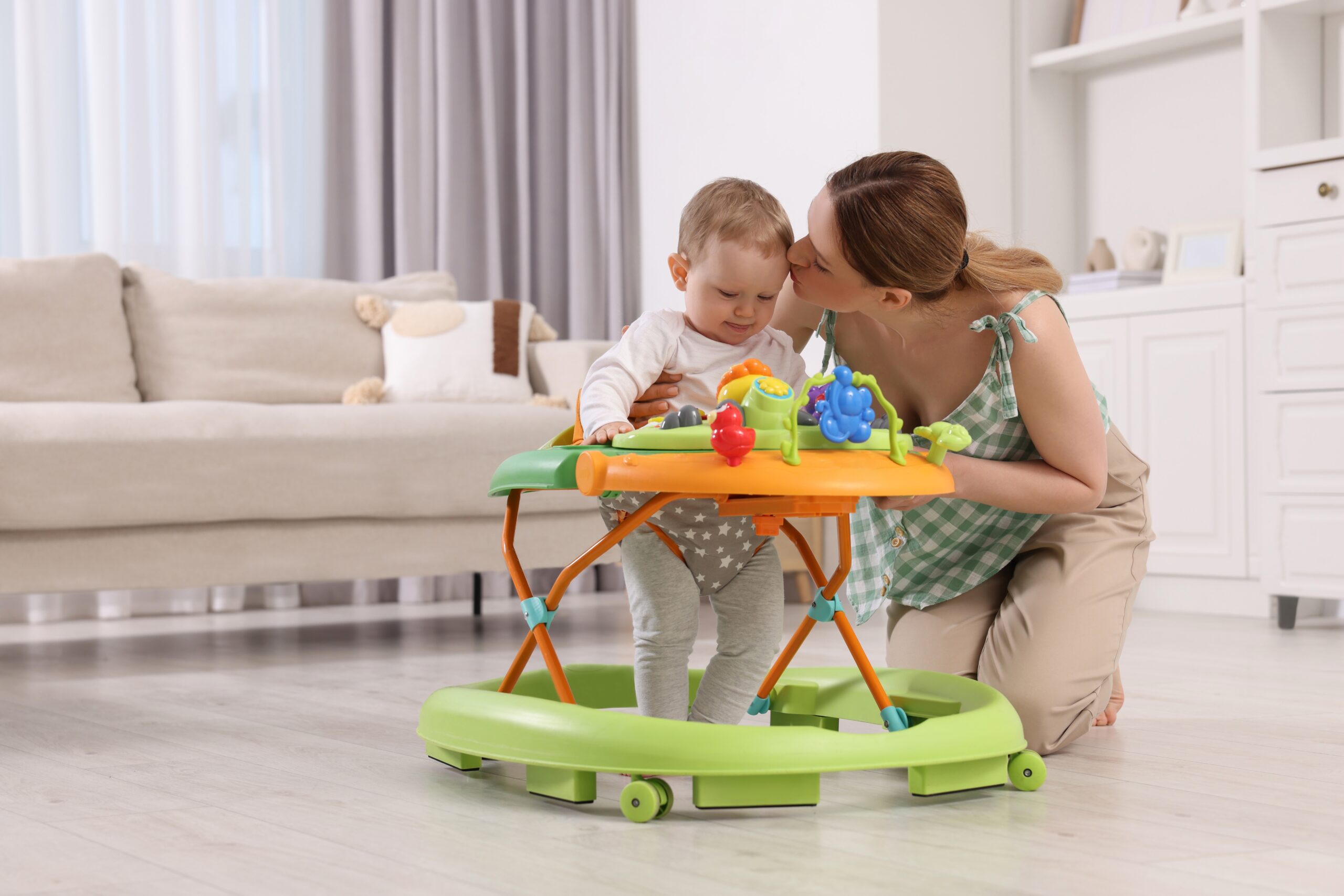By Francesca Resurreccion PT, DPT
As a pediatric physical therapist, parents often ask if baby walkers help babies take their first steps. I’m here to tell you, sadly, they don’t. Let’s look into it together.
To prepare for walking, babies need to meet several milestones:
- Rolling
- Prop sitting
- Independent sitting
- Army crawling on their tummy
- Creeping (crawling on hands and knees)
- Pulling to stand on low furniture like your couch
- Cruising side to side and between furniture
Each milestone strengthens the child’s abdominal and hip musculature, which will help them assume an upright trunk in sitting and standing. Additionally, each milestone helps refine the balance necessary for walking. If we place children in walkers, we’re losing out on opportunities to strengthen them in age-appropriate developmental positions such as propped sitting, ring sitting, side sitting, quadruped, tall kneeling, half kneeling, and supported standing at low furniture. Not only do these positions help with strength and balance, but they also help develop their hip joints. Placing our little ones in a walker before their hip joints are ready to tolerate standing increases the risk of hip dysplasia. Furthermore, the seats in walkers could lead to muscular imbalances and motor control impairments due to children bearing weight on the balls of their feet, which could lead to heel cord tightness, resulting in “toe walking” once they’re no longer using the device.
It’s not all doom and gloom for parents with walkers though! I understand there will be times when you need a break; we’re busy people, and I get that. Generally, I recommend that babies spend no more than 20 minutes in a baby walker.
What can you use instead?
Floor time is essential to furthering your child’s development! Let your child explore, move, and play in a playpen or pack-n-play, a safe contained area while following safety guidelines. Providing floor time is one of the best things you can do to continue strengthening your child to get them to meet their milestones.
If you want a toy that’ll help develop the overall strength and balance required for walking, I recommend the VTech sit-to-stand learning walker (or anything similar to this toy). Sit-to-stand learning walkers are great for playing in tall kneeling when interacting with the buttons in the front to strengthen hips and abdominals. These toys help with balance and coordination as your baby pushes the toy forward.
For short stints, you could use the Skip Hop Baby Activity Center—making sure that their feet are flat on the plate below. Activity centers like this are a good option because you can use them to practice cruising and use them as a coloring table when they’re older.
Independent walking develops anywhere from 12-18 months, which is a reasonably significant age range. If you have any concerns regarding your little one’s ability to walk, reach out for an evaluation!




